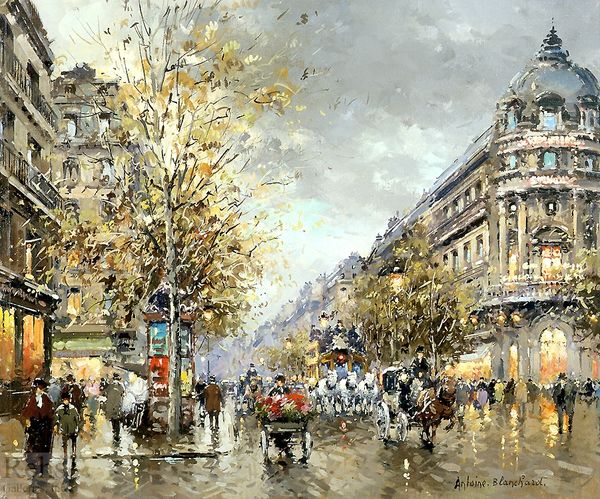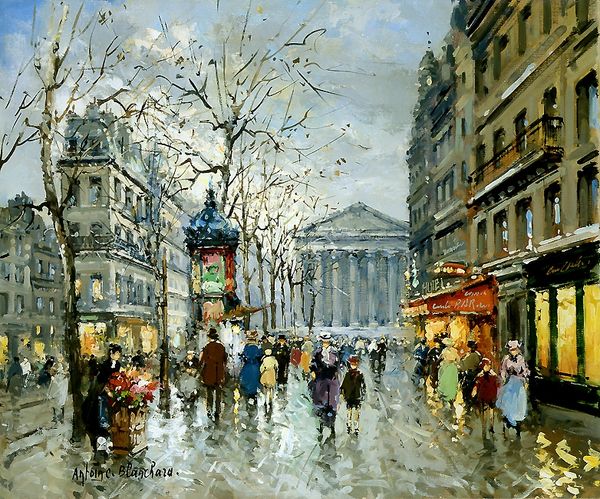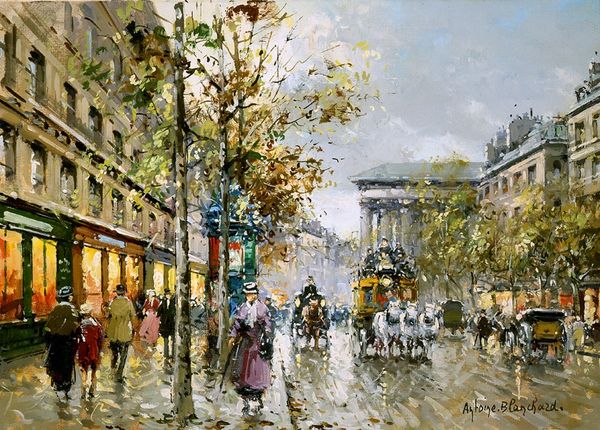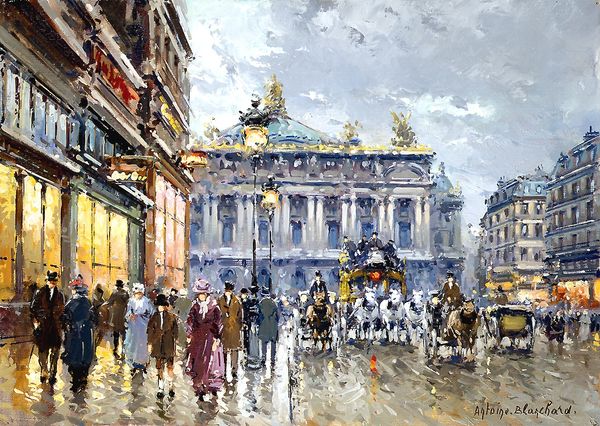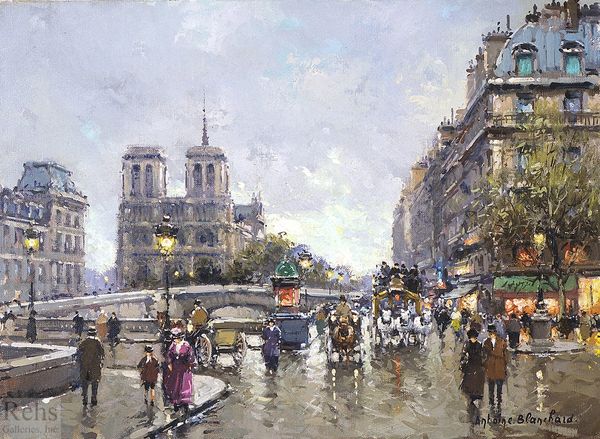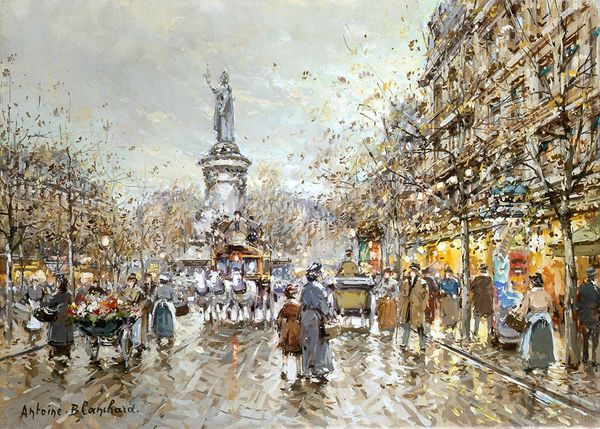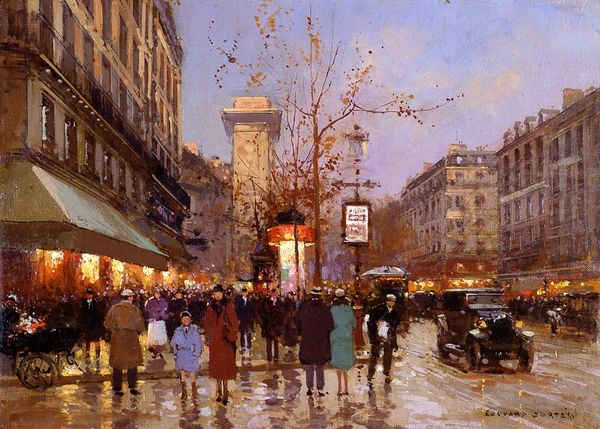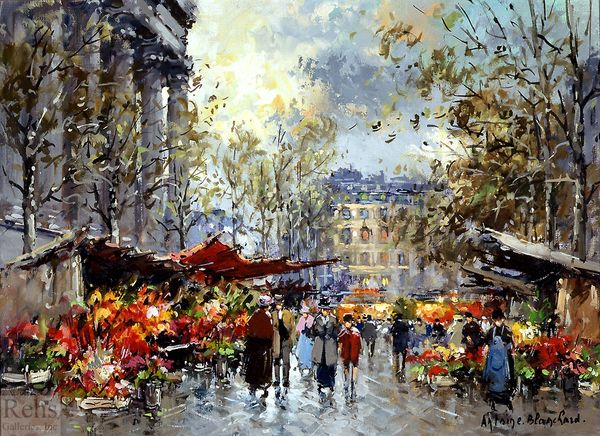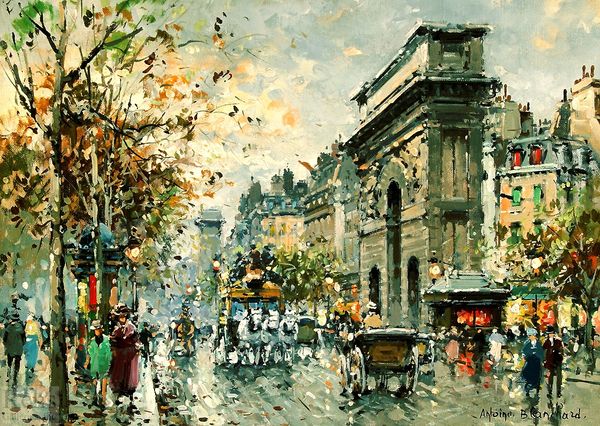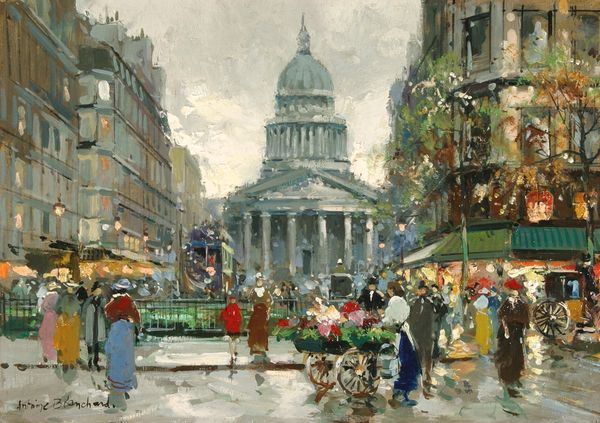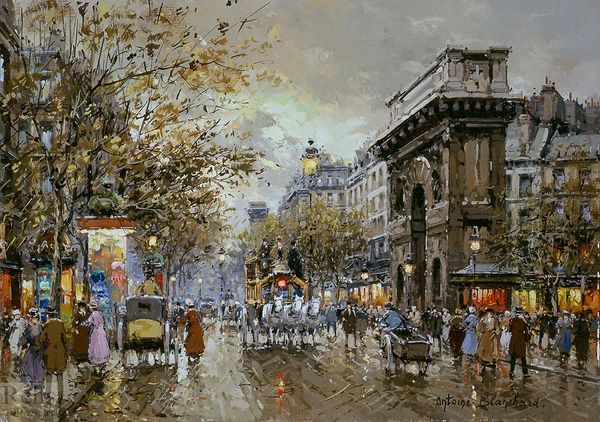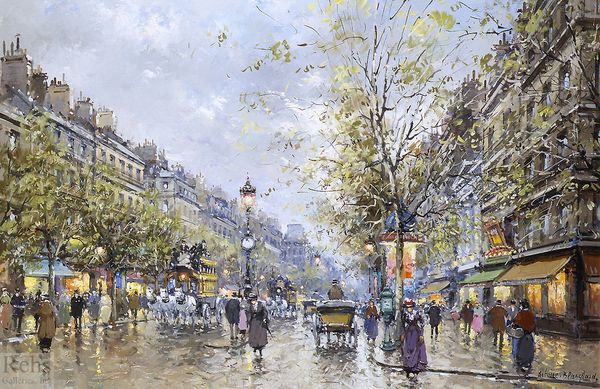
painting, oil-paint, impasto
#
flâneur
#
narrative-art
#
painting
#
impressionism
#
oil-paint
#
landscape
#
perspective
#
impasto
#
cityscape
#
genre-painting
#
academic-art
#
modernism
Copyright: Antoine Blanchard,Fair Use
Curator: Antoine Blanchard’s painting, titled "Place du Luxembourg le Pantheon", presents a bustling Parisian street scene rendered with oil on canvas. The composition draws the eye towards the Pantheon in the distance, anchoring the cityscape. Editor: It strikes me immediately as a picture about mood—wet, cool, and hinting at a deeper sense of melancholy in its greyscale treatment, which is amplified by small hints of warm accents. Curator: Precisely. Blanchard painted numerous Parisian scenes, and they invite discussions about class and modernity. Observe how the figures in the foreground, likely bourgeois citizens, are presented. Consider the cultural context of Paris during this era, a society still grappling with rigid class structures despite its burgeoning modernity. The Pantheon itself serves as a symbol, initially a church, then a secular temple dedicated to revolutionary ideals and national heroes, reflecting complex power dynamics. Editor: Agreed, there is definitely tension in this portrayal! Shifting away from iconology, I notice that the brushstrokes are quite broken and fragmented, contributing to a hazy, almost dreamlike atmosphere. I find that intriguing, considering how it softens what could be interpreted as social realism and brings into sharp contrast its academic structure and subject. The way he models space, with such atmospheric diminution, reminds me a bit of Turner. Curator: I think your reading really points to Blanchard’s talent for synthesis, right? He is operating at a nexus of modernism and academic convention. Now look at the clothing and body language of the figures. What can these small details convey about gender roles? Do we sense any critique? Do we sense aspiration? I find the subtle suggestion of an emerging middle class to be an important dimension of these scenes, captured beautifully by the impasto technique used here. Editor: The textures really animate the street, almost like a shallow relief. But if we push it further in the comparison to Turner or the Impressionists, one recognizes that this work flattens space to make a stage on which all his characters come alive as if by their own light. Overall, I’m struck how it brings all these elements—surface, theme, perspective—into a tense kind of harmony. Curator: So, what seemed at first like a traditional cityscape ends up becoming a painting about the transformation of Parisian identity, revealing some very fine, artful moments! Editor: Indeed. A lovely exploration of light and form reflecting and refracting history.
Comments
No comments
Be the first to comment and join the conversation on the ultimate creative platform.
